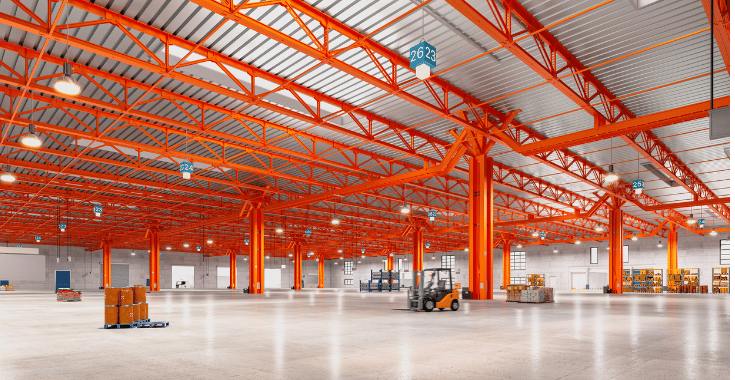Enhance Safety with Fire Protective Coatings for Structure Steel in Warehouses, Garages & Industrial Plants
Introduction:
When it comes to safeguarding the integrity of warehouses, garages, and industrial plants, selecting the right floor coating is of paramount importance. In particular, fire safety coatings for structure steel play a vital role in protecting buildings from the damaging effects of fire incidents. Let’s delve into the key considerations and options available for fire protective coatings for structure steel and concrete walls in such environments.
Understanding Fire Safety Coatings for Structure Steel
Fire safety coatings are specifically formulated to prevent or slow down the spread of fire in buildings. When applied to structure steel elements, these coatings act as a protective barrier, reducing the risk of structural collapse during a fire incident. They are designed to withstand high temperatures and prevent the steel from reaching its critical temperature, thereby buying valuable time for evacuation and firefighting efforts.
Fire protective coatings for structure steel come in various forms, including intumescent coatings, cementitious coatings, and epoxy coatings. Each type offers distinct advantages in terms of fire resistance, durability, and ease of application.
Types of Fire Protective Coatings for Structure Steel
1. Intumescent Coatings: These coatings expand when exposed to heat, forming a thick insulating layer that shields the steel from fire. They are commonly used in warehouses and industrial plants due to their high fire resistance ratings.
2. Cementitious Coatings: Comprising cement, aggregates, and other additives, cementitious coatings create a dense, fire-resistant barrier on structure steel. They provide excellent durability and can withstand extreme temperatures.
3. Epoxy Coatings: Epoxy coatings offer both fire resistance and corrosion protection for structure steel. They are easy to apply and maintain, making them ideal for garages and automotive facilities where chemical exposure is a concern.
Factors to Consider When Selecting Fire Protective Coatings
1. Fire Rating: Ensure that the chosen coating meets the required fire rating standards for the specific environment, such as ASTM E119 or UL 1709.
2. Compatibility: Consider the compatibility of the coating with the existing substrate material to ensure proper adhesion and performance.
3. Durability: Opt for coatings that offer long-term durability and require minimal maintenance to reduce lifecycle costs.
4. Application Method: Evaluate the ease of application and curing time of the coating to minimize downtime during installation.
Benefits of Fire Protective Coatings for Walls & Concrete
In addition to structure steel, applying fire protective coatings on walls and concrete surfaces can enhance the overall fire safety of a building. These coatings offer thermal insulation, prevent flame propagation, and protect the underlying substrate from heat damage, effectively containing fires and limiting their spread to other areas.
Moreover, fire protective coatings for walls and concrete can improve the structural integrity of the building, prolonging evacuation times, and reducing property damage in the event of a fire.
Conclusion
Choosing the right fire protective coatings for structure steel, walls, and concrete surfaces is essential for ensuring the safety and integrity of warehouses, garages, and industrial plants. By understanding the different types of coatings available, their benefits, and key selection criteria, building owners and facility managers can make informed decisions to enhance fire protection measures in their premises. Invest in quality fire safety coatings today to safeguard your assets and personnel against the devastating impact of fire incidents.

